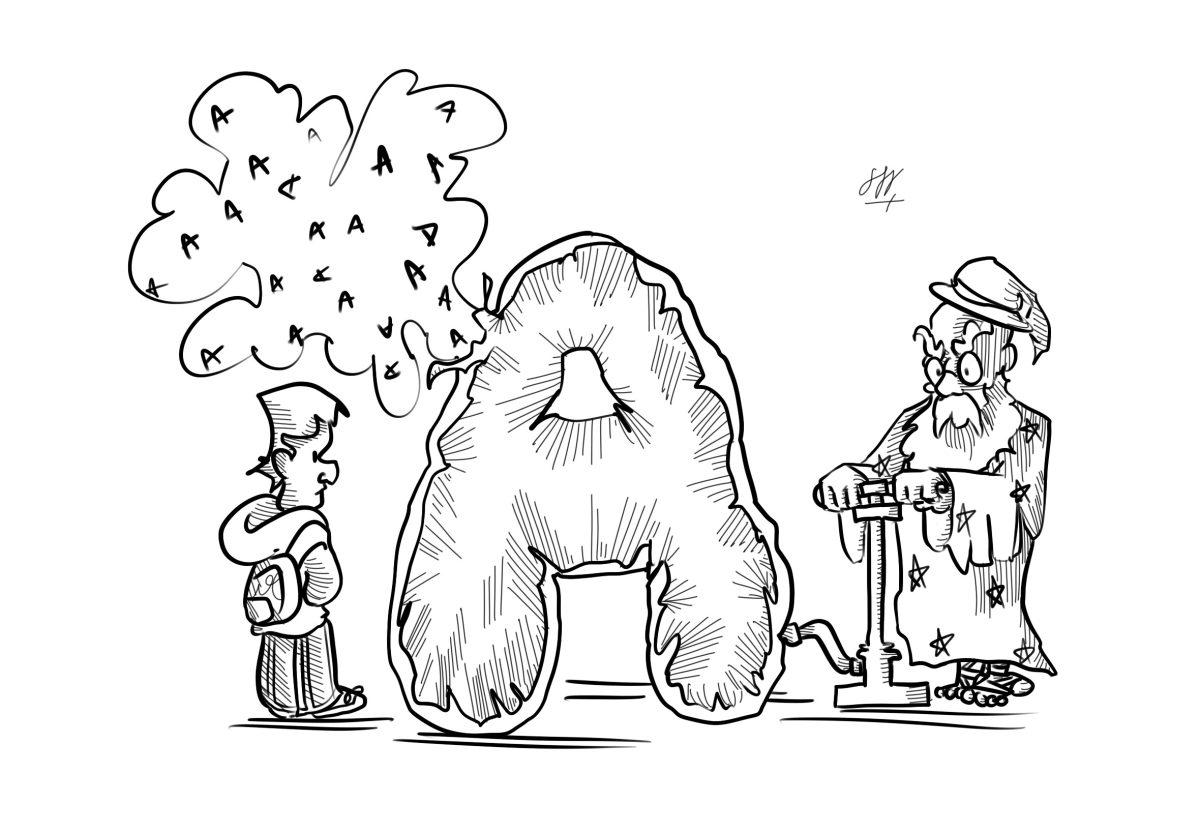
What does it really mean to have an A at Nobles? Does it mean that you can identify the most literary symbols in The Great Gatsby? Or memorize the most about ancient Greece? While this may not always be clear, Nobles students still strive to reach the mighty A. An A serves as the threshold that drives each and every student to genuinely put in their best effort. However, the rise in grade inflation combats this goal. If students know that their teachers will falsely inflate their grades by the end of the quarter or semester, then they no longer have any incentive to work hard in class.
Indeed, the rise of grade inflation at Nobles mirrors a nationwide trend. According to the New York Times, since 2019, an A has been the most common grade among students in independent schools. Moreover, independent school students’ grade point averages (GPA) have increased by 8%, compared to less than 3% in public schools. Whether Nobles is simply just following a trend or not, the prevalence of grade inflation remains a pressing issue that deteriorates the quality of education and of the school as a whole.
The rise in grade inflation is a direct result of the increasing pressure placed on students to perform well in competitive academic environments like Nobles. As mentioned earlier, a perfect transcript with all A’s serves as the gold standard that will enable students to impress admissions officers and get into the most selective colleges. Thus, an A is viewed as a key – an opportunity to unlock a stable and secure future. Nobles students place an immense amount of pressure on trying to procure this key. This phenomenon is bolstered by teachers, as many seek to support their students by bettering their grades. This pattern is especially prevalent amongst seniors’ quarter one grades, as some teachers either make it easier for a student to attain an A or simply inflate their grade at the end of the quarter in order to increase a student’s chances of getting into their dream school.
However, by falsely inflating their grades, these students and teachers fail to recognize that they are losing the true meaning of what a grade is meant to represent. Grades were initially designed to serve as indicators of a student’s status and standing in a given class. They were meant to be symbols of progress and achievement, not a means to impress future schools and falsify a student’s academic caliber. Similarly, on a single assessment, grades were meant to measure a student’s understanding and mastery of a subject. When grades are inflated, the accuracy of this measurement disappears. As a result, students who genuinely excel and succeed in a class will be seen as virtually the same as students who put in less effort and benefit from this grade inflation. Ultimately, the phenomenon of grade inflation creates a false sense of achievement and dilutes the true value of a high grade, making them meaningless indicators of academic success.
“Therefore, grade inflation detracts from the rigor that Nobles strives for, inhibiting a student’s growth and preparation for higher education.”
Nobles families typically pay upwards of $60,000 per annum and make sacrifices for their children to attend this school. A large part of this is to ensure that their children receive a rigorous education that cannot be attained in many other schools, private or otherwise. With this rigorous education comes a sense of discomfort, especially with grades. No Nobles student is perfect, as almost every student receives at least one imperfect grade during their time here. However, this experience forces students to accept the reality of failure and learn lessons about how to grow from their mistakes. Thus, the range of grades every Nobles student receives during their four years in the Upper School is crucial in developing a student’s ability to learn effectively. Grade inflation directly contradicts this idea. How are Nobles students meant to learn from their mistakes if they know that their mistakes will not be punished and the teacher will protect their grades in the end? Particularly in a high school setting, if students are not well-equipped to tackle mistakes and errors, they will struggle in college, where professors demand a greater workload and the restrictions on their grades become tighter. Therefore, grade inflation detracts from the rigor that Nobles strives for, inhibiting a student’s growth and preparation for higher education.
While grade inflation may seem like a convenient solution to rising academic standards both at Nobles and nationwide, it ultimately does more harm than good. By dissuading students from working hard in their classes, creating false preparedness for the future, and eroding the famed “Nobles rigor,” grade inflation undermines the very goals of a high school education. Thus, the question becomes: Will Nobles be an institution that rewards mediocrity or one that promotes genuine academic excellence and truly enables students to “unlock the potential to do good?”
